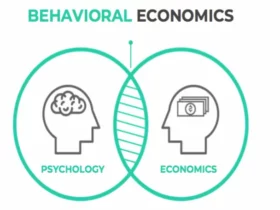Entrepreneurial aspirations in fashion often stem from creativity and innovation. Yet this highly competitive field presents both opportunities and challenges to entrepreneurs looking to break into. Unfortunately, too often those seeking success as fashion entrepreneurs jump headfirst into the business without first realizing its inherent pitfalls that could hinder their progress and success.
This blog post covers six of the most frequently encountered errors made by fashion entrepreneurs and offers practical insight on how to overcome these errors. From neglecting market research to underestimating branding’s importance, we will reveal any missteps that could potentially thwart your fashion venture and give you all of the knowledge and tools necessary for sustainable success in the fashion business.
Inaccurately Forecasting Demand
Wrongly forecasting demand is a significant issue that plagues many fashion entrepreneurs. Failing to accurately forecast demand for your products can result in excess inventory or shortages that prove costly. By employing effective tools and strategies such as reliable apparel management software, you can avoid this pitfall altogether.
This technology helps you analyze historical sales data, consumer trends, and seasonality, providing valuable insights to make more informed inventory decisions. By avoiding the mistake of inaccurately forecasting demand, you can better align your production and inventory levels with actual market needs, ensuring that your fashion business remains efficient, profitable, and responsive to customer demands.
Neglecting Market Research
The global fashion industry, with a staggering valuation of $1.7 trillion in 2023, is marked by intense competition, making continuous market research an imperative necessity. However, fashion entrepreneurs who neglect market research are making one of the biggest mistakes when it comes to business.
Gaining an in-depth knowledge of your target audience, their preferences and current market trends is necessary for success in the fashion business. Without conducting in-depth market research you risk creating products that don’t resonate with your target demographic, leading to reduced sales and wasted resources.
Start by conducting comprehensive market research. Assess competitors, identify gaps in the market, and gather consumer insight and preferences data that will allow you to craft unique value propositions tailored specifically for target audiences.
Underestimating the Importance of Branding
Branding is of vital importance in the fashion industry. Your brand identity—logo, visual aesthetics, and messaging—plays an integral part in drawing customers in. Unfortunately, many fashion entrepreneurs overlook its significance, which leads to decreased recognition and trust in their products.
To avoid making this error, invest time and resources in creating a strong brand identity. Create an engaging story about who you are that resonates with your target market and sets you apart from competitors. Consistency is key—ensure your branding elements appear throughout all marketing materials such as websites and social media profiles.
Ignoring the Online Presence
In today’s digital age, neglecting your online presence is a critical mistake for fashion entrepreneurs. Internet technology has revolutionized how consumers discover and purchase fashion products. Unfortunately, too many entrepreneurs underestimate its significance for business success and social media use.
Avoid this mistake by establishing a strong presence online. Build an engaging, user-friendly website featuring high-resolution images and descriptions of your fashion items, while taking advantage of social media to interact with potential buyers and promote them. Embrace e-commerce to reach a wider audience and provide a convenient shopping experience. Invest in digital marketing strategies to boost your online visibility.
Failing to Adapt to Changing Trends

The fashion industry is constantly evolving, with trends and consumer preferences changing rapidly. Fashion entrepreneurs who fail to adapt to these shifts risk becoming outdated and losing relevance in the market. Sticking to a single design or concept without flexibility can be a costly mistake.
To avoid this, stay updated on the latest fashion trends and consumer preferences. Attend industry events, read fashion magazines, and follow fashion influencers on social media. Embrace a flexible approach to product development and be open to adjustments based on market feedback. Continuously innovate to keep your brand fresh and appealing to your target audience.
Overextending Resources
Fashion entrepreneurs frequently commit the error of overextending their resources during the early stages of a venture, often by stockpiling inventory, spending excessively on marketing efforts, or incurring debt without an effective repayment strategy. Overextending can strain your finances and put your business at risk.
To avoid this mistake, be mindful of your budget and resources. Start with a lean approach, only investing in what’s necessary for your fashion business to operate efficiently. Keep a close eye on your cash flow and expenses. As your business grows, consider reinvesting profits strategically and avoid making extravagant decisions that could jeopardize your financial stability.
Final Thoughts
Starting a fashion business can be an exhilarating and fulfilling journey, but it comes with its share of challenges. Avoiding common errors such as neglecting market research, failing to create an adequate business plan, neglecting branding efforts, underestimating online presence, and failing to adapt quickly enough to shifting trends, is essential for long-term success in the fashion industry.
Fashion entrepreneurs can increase their chances of creating a successful and sustainable brand by being mindful of these potential pitfalls and employing suggested strategies. Success lies at the intersection of creativity, strategic planning, market knowledge, and consumer preferences—three attributes necessary for building any sustainable fashion brand.













